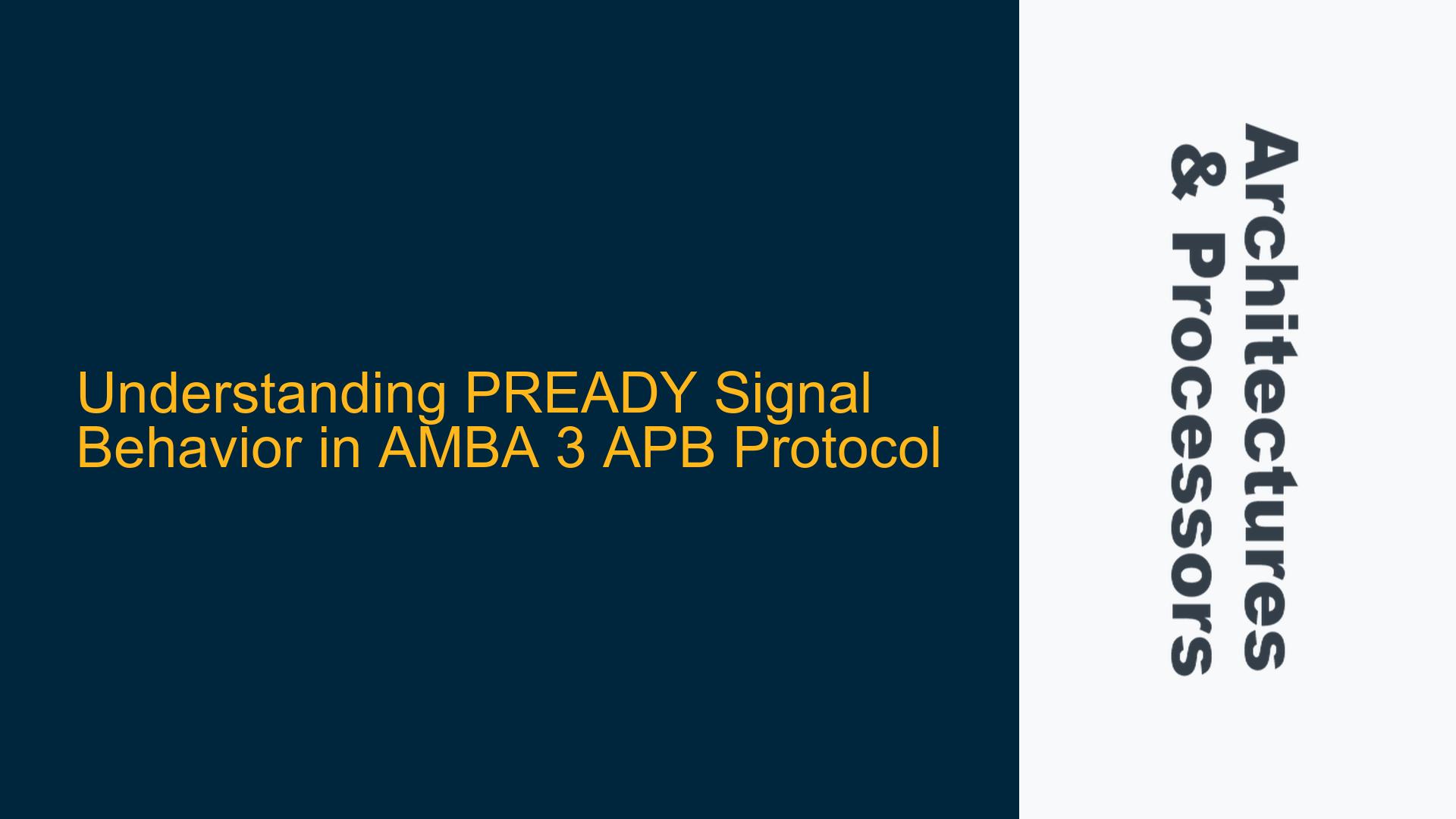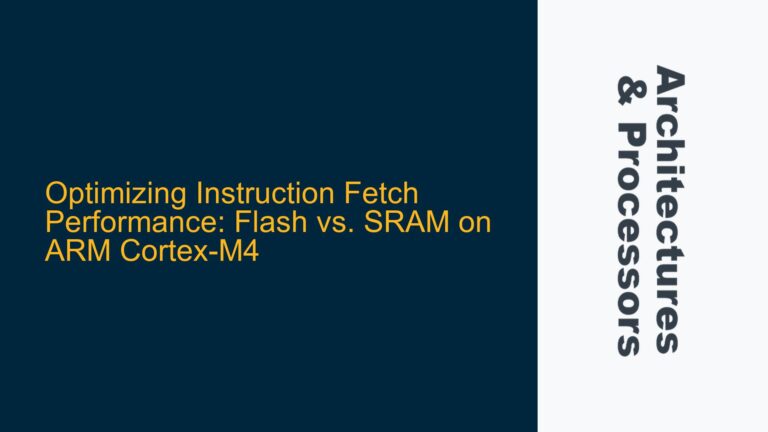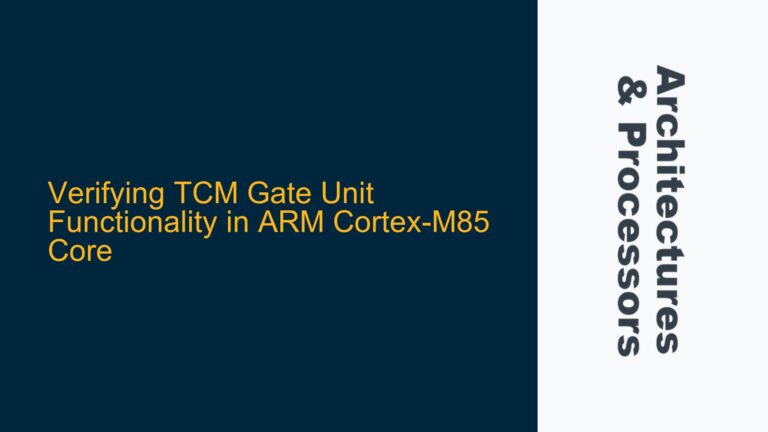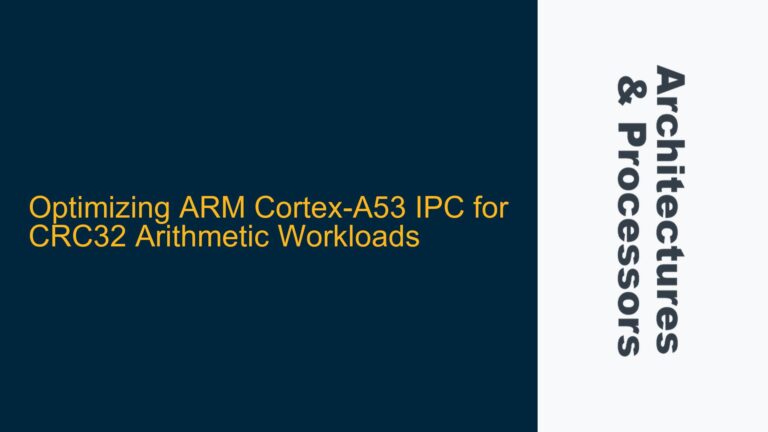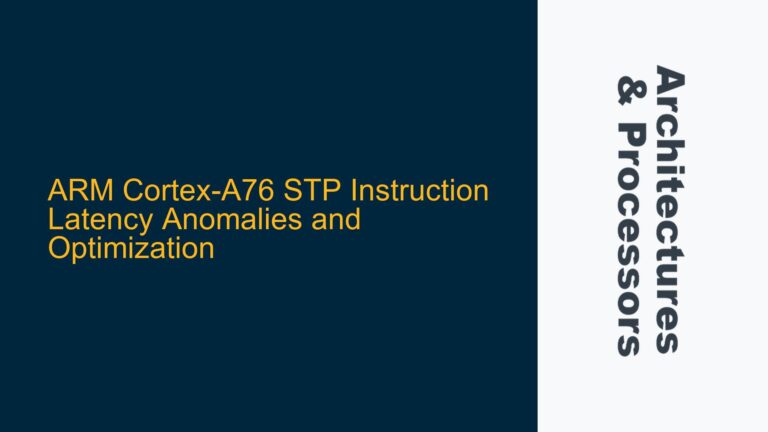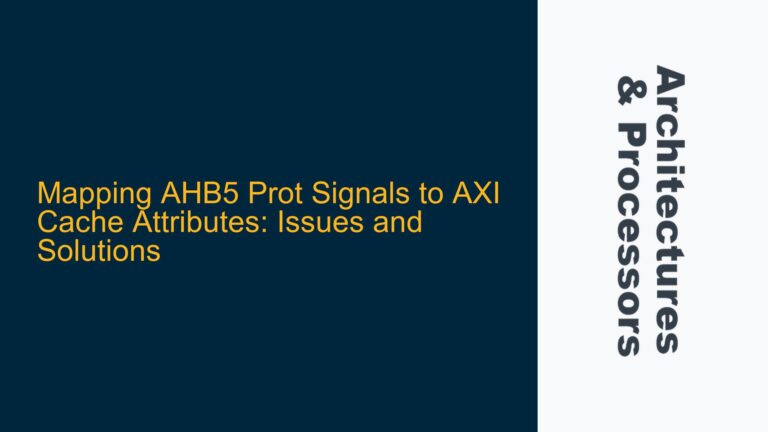PREADY Signal Generation and Wait State Insertion in APB Transfers
The PREADY signal in the AMBA 3 APB protocol is a critical handshake signal that indicates the completion status of a transfer between the APB master and the APB slave. The APB slave generates the PREADY signal to inform the APB master whether the current transfer has been successfully completed or if additional wait states are required. The generation of PREADY is influenced by several factors, including the state of the PSELx, PENABLE, and PWRITE signals, as well as the internal state of the APB slave.
For write transfers, the APB slave asserts PREADY high once the write data on the PWDATA bus has been successfully written to the designated storage location (e.g., a memory or register) within the APB slave. Similarly, for read transfers, the APB slave asserts PREADY high once the read data from the designated storage location is available on the PRDATA bus. If the APB slave is unable to complete the transfer immediately due to internal latency or other operational constraints, it keeps PREADY low, thereby inserting wait states until the transfer can be completed.
The insertion of wait states is a mechanism that allows the APB slave to handle transfers that require additional time to complete. For example, if the APB slave is busy with an internal operation or if there is a delay in accessing the designated storage location, the APB slave can keep PREADY low for multiple clock cycles. During this period, the APB master must wait until PREADY is asserted high before proceeding with the next transfer.
The behavior of PREADY is also influenced by the state of the PSELx and PENABLE signals. The PSELx signal is used to select the specific APB slave for the current transfer, while the PENABLE signal indicates that the transfer is in the access phase. The APB slave must consider the state of these signals when generating PREADY. Specifically, the APB slave should only assert PREADY high when both PSELx and PENABLE are high, indicating that the transfer is in progress.
In summary, the generation of the PREADY signal by the APB slave is a dynamic process that depends on the internal state of the APB slave, the state of the PSELx and PENABLE signals, and the type of transfer (write or read). The APB slave can insert wait states by keeping PREADY low for multiple clock cycles, allowing it to handle transfers that require additional time to complete.
Factors Influencing PREADY Signal Assertion in APB Slaves
The assertion of the PREADY signal by the APB slave is influenced by several key factors, including the state of the PSELx, PENABLE, and PWRITE signals, as well as the internal state of the APB slave. These factors determine whether the APB slave can complete the current transfer immediately or if it needs to insert wait states by keeping PREADY low.
The PSELx signal is used to select the specific APB slave for the current transfer. When PSELx is high, it indicates that the APB slave has been selected by the APB master for the transfer. The PENABLE signal, on the other hand, indicates that the transfer is in the access phase. The APB slave must consider the state of both PSELx and PENABLE when generating PREADY. Specifically, the APB slave should only assert PREADY high when both PSELx and PENABLE are high, indicating that the transfer is in progress.
The PWRITE signal determines the type of transfer (write or read). For write transfers, the APB slave must ensure that the write data on the PWDATA bus has been successfully written to the designated storage location before asserting PREADY high. For read transfers, the APB slave must ensure that the read data from the designated storage location is available on the PRDATA bus before asserting PREADY high.
The internal state of the APB slave also plays a crucial role in determining when to assert PREADY. If the APB slave is busy with an internal operation or if there is a delay in accessing the designated storage location, it may need to insert wait states by keeping PREADY low for multiple clock cycles. The number of wait states inserted depends on the specific requirements of the APB slave and the nature of the internal operation.
For example, if the APB slave is performing a complex internal operation that requires multiple clock cycles to complete, it may keep PREADY low for the duration of the operation. Similarly, if there is a delay in accessing the designated storage location due to contention or other factors, the APB slave may need to insert wait states until the access can be completed.
In summary, the assertion of the PREADY signal by the APB slave is influenced by the state of the PSELx, PENABLE, and PWRITE signals, as well as the internal state of the APB slave. The APB slave must carefully consider these factors when generating PREADY to ensure that transfers are completed correctly and efficiently.
Debugging and Verifying PREADY Signal Behavior in APB Transfers
Debugging and verifying the behavior of the PREADY signal in APB transfers is a critical aspect of AMBA 3 APB protocol compliance. Proper verification ensures that the APB slave correctly asserts PREADY based on the state of the PSELx, PENABLE, and PWRITE signals, as well as its internal state. This section outlines the steps and strategies for debugging and verifying PREADY signal behavior in APB transfers.
To verify the behavior of the PREADY signal, it is essential to simulate various transfer scenarios, including both write and read transfers with and without wait states. The simulation should cover different combinations of PSELx, PENABLE, and PWRITE signals, as well as different internal states of the APB slave. The goal is to ensure that the APB slave correctly asserts PREADY in all possible scenarios.
One effective strategy for verifying PREADY signal behavior is to use a testbench that generates a wide range of transfer scenarios. The testbench should include stimuli for both write and read transfers, with varying numbers of wait states. The testbench should also monitor the state of the PSELx, PENABLE, and PWRITE signals, as well as the internal state of the APB slave, to ensure that PREADY is asserted correctly.
During simulation, it is important to monitor the PREADY signal and compare its behavior against the expected results. For example, if the APB slave is expected to insert two wait states for a particular transfer, the simulation should confirm that PREADY remains low for two clock cycles before being asserted high. Similarly, if the APB slave is expected to complete a transfer immediately, the simulation should confirm that PREADY is asserted high in the same clock cycle as the transfer.
To detect wait states during simulation, the following pseudo-Verilog code can be used:
always @(posedge PCLK) begin
if (PSEL == 1'b1 && PENABLE == 1'b1 && PREADY == 1'b0) begin
if (PWRITE == 1'b1) begin
$display("Detected WRITE wait state at %d", $time);
end else begin
$display("Detected READ wait state at %d", $time);
end
end
end
This code monitors the state of the PSEL, PENABLE, and PREADY signals and detects when wait states are inserted during write or read transfers. The $display statement outputs a message to the simulation log, indicating the type of transfer and the time at which the wait state was detected.
In addition to simulation, it is also important to perform formal verification to ensure that the APB slave complies with the AMBA 3 APB protocol. Formal verification involves using mathematical techniques to prove that the design meets the specified requirements. This can be particularly useful for verifying complex corner cases that may be difficult to cover using simulation alone.
Finally, it is important to review the design and implementation of the APB slave to ensure that it correctly handles all possible transfer scenarios. This includes reviewing the logic that generates the PREADY signal, as well as the internal state machine that controls the behavior of the APB slave. Any issues identified during the review should be addressed before the design is finalized.
In summary, debugging and verifying the behavior of the PREADY signal in APB transfers involves simulating various transfer scenarios, monitoring the state of the PSELx, PENABLE, and PWRITE signals, and performing formal verification. By following these steps, designers can ensure that the APB slave correctly asserts PREADY in all possible scenarios, thereby ensuring compliance with the AMBA 3 APB protocol.
